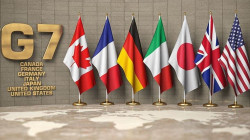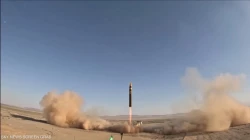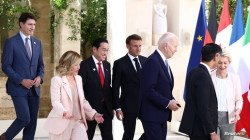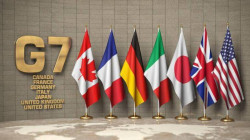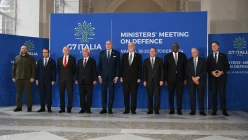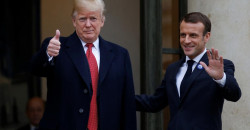G7 kicks off CGI
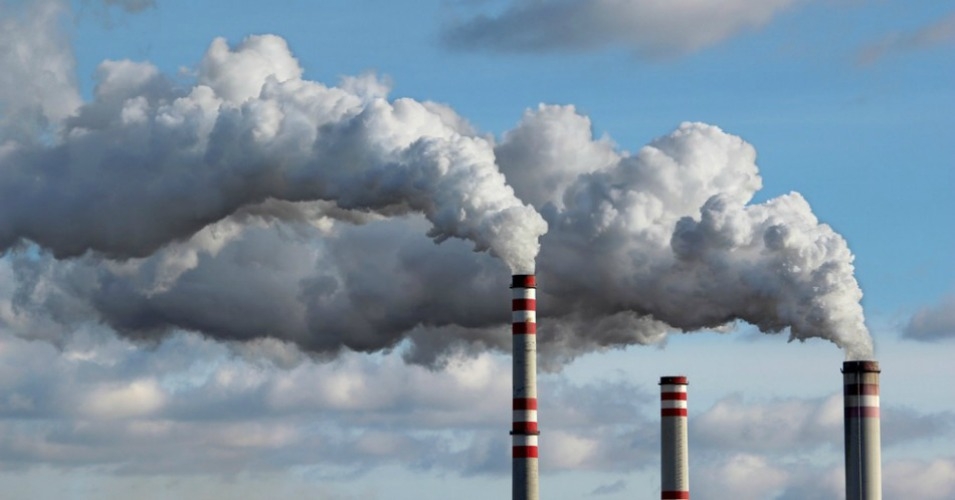
Shafaq News/ During the three-day leaders’ summit that kicks off on Friday, the Group of Seven (G7) developed nations is set to unveil a Clean Green Initiative (CGI). The huge infrastructure investment plan aims to go toe-to-toe with China’s Belt and Road Initiative (BRI) and counter Beijing’s growing global influence with a rival bit of chequebook diplomacy.
“This initiative is about equalising the terms of foreign investment between Chinese and Western companies,” Lauren Johnston, research associate at the SOAS China Institute, told Al Jazeera. “Chinese companies – especially state-owned enterprises – may have access to financing that Western companies find more difficult to obtain.”
Although the CGI’s exact scope is still unknown, it will likely expand on the Blue Dot Network, the Indo-Pacific infrastructure development initiative backed by the United States, Australia and Japan, which prioritised each project’s financial transparency and environmental sustainability alongside its impact on economic development.
Economy
|
Climate
Will G7 green initiative have more climate cred than China’s BRI?
The G7’s Clean Green Initiative aims to rival China’s Belt and Road Initiative and curb Beijing’s growing economic and political clout.
The Group of Seven's Clean Green Initiative aims to rival China's Belt and Road Initiative [Neil Hall/EPA/Bloomberg/EPA]
The Group of Seven's Clean Green Initiative aims to rival China's Belt and Road Initiative [Neil Hall/EPA/Bloomberg/EPA]
By Dominic Fitzsimmons
11 Jun 2021
During the three-day leaders’ summit that kicks off on Friday, the Group of Seven (G7) developed nations is set to unveil a Clean Green Initiative (CGI). The huge infrastructure investment plan aims to go toe-to-toe with China’s Belt and Road Initiative (BRI) and counter Beijing’s growing global influence with a rival bit of chequebook diplomacy.
“This initiative is about equalising the terms of foreign investment between Chinese and Western companies,” Lauren Johnston, research associate at the SOAS China Institute, told Al Jazeera. “Chinese companies – especially state-owned enterprises – may have access to financing that Western companies find more difficult to obtain.”
Although the CGI’s exact scope is still unknown, it will likely expand on the Blue Dot Network, the Indo-Pacific infrastructure development initiative backed by the United States, Australia and Japan, which prioritised each project’s financial transparency and environmental sustainability alongside its impact on economic development.
KEEP READING
G7 to donate 1 billion COVID-19 vaccine doses to poorer countries
Despite three-child policy, many in China can’t afford more kids
China is exploiting Western hypocrisy in the Middle East
Amnesty says China has created ‘dystopian hellscape’ in Xinjiang
Part soft-power exercise, part domestic stimulus, China’s ambitious and amorphous BRI has sunk trillions of dollars into projects in 68 countries, predominately in Asia and Africa, since its launch in 2013.
Critics say it has bankrolled and built ecological carbuncles the world over, locking countries into unsustainable infrastructure, technology and resource extraction at a time when they should be adopting less-polluting power sources.
“China is facilitating national government priorities around the world that are not in line with long-term climate and development goals,” Rebecca Ray, a senior researcher at Boston University’s Global Development Policy Center, told Al Jazeera, noting that many BRI projects wouldn’t pass the environmental and social safeguards demanded by Western-dominated multilateral development institutions.
In an address to the United Nations last year, President Xi Jinping promised China would bring CO2 emissions to a peak before 2030 and aim to be carbon neutral by 2060.
However, when the world’s biggest polluter laid out its 14th Five-Year Plan in March, it only set one carbon goal: cutting emissions by 18 percent per unit of gross domestic product over five years, equitable to its goal in 2016.
And at the 2019 Belt and Road Forum, Xi stressed the importance of reducing the BRI’s environmental impact; with the newly-founded BRI Green Coalition subsequently giving each funding proposal a red, amber or green traffic light mark in a bid to discourage the funding of polluting projects.
Earlier this year, the Financial Times reported that Bangladesh’s desire to repurpose a $3.6bn BRI infrastructure loan to coal projects – a move motivated by a coal-rich country keen to secure cheap energy sovereignty – brought negative pressure on China. The resulting furore led to Beijing actually making good on its promises of a greener BRI, telling Bangladeshi authorities they would no longer back its coal projects.
The BRI was already moving away from funding coal projects, which peaked at $6.9bn in 2017 and halved in 2019, according to data compiled by Boston University. Last year, they accounted for a mere half a billion dollars in funding.
But despite this pivot and China’s increasing strength in renewables, there has not been a commensurate leap in its financial backing of green power projects.
Beijing’s oft-stated goals may be more hot air than wind power ($1.1bn invested since 2011; none since 2017) and solar ($2.2bn since 2010, nearly of half of which was in 2012), with a paltry $493m invested in geothermal and $60m in biomass generation. These are dwarfed by the $48bn China invested in oil, $44.3bn in coal and $41.2bn in hydropower generation projects since the BRI’s launch, according to Boston University researchers.
